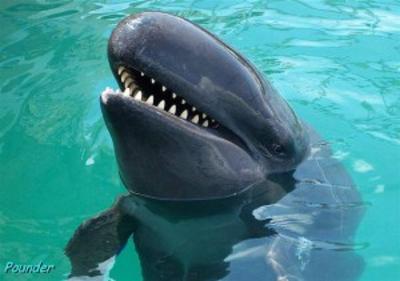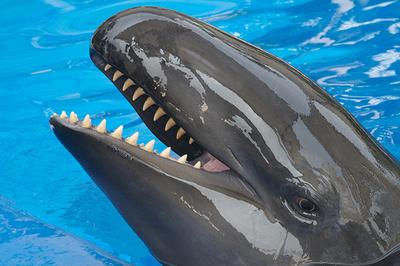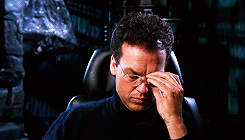I'm really struggling to understand the hate for this movie from a 2 minute 30 second trailer. Plus, the trailer hasn't revealed anything about the movie we didn't already know, you must have been living under a rock to not have heard the D-Rex name being branded around. Also, whilst on the subject of hybrid dinsoaurs, are you all failing to see that EVERY dinosaur in Jurassic Park is a hybrid? They never had complete strands from day one, they were always mixed with frog DNA etc, so what they created was never a true representation of a dinosaur anyway. This can explain the whole stupid feather debate as well.
Lastly, regarding the Raptors being trained, I found an interesting article:
• To those who are having trouble believing that raptors could be trained, some food for thought (warning: this is a long one!):
I'm a former marine mammal trainer, having worked at various accredited facilities in Hawaii such as Dolphin Quest, Sea Life Park, and the Waikiki Aquarium (just across the street from one of Jurassic World's filming locations, the Honolulu Zoo, actually!) Before SeaWorld opened in the '50s, killer whales were seen by the public as exactly that: killers. And rightly so. Like raptors, they hunt in groups, are frighteningly intelligent, and have been known to hunt seals, sharks, and other whales. Yet within years of opening, SeaWorld managed to train them into show-running theme park headliners with the cuddly persona of "Shamu". Where I worked in Hawaii, some of the dolphins were first-generation from the wild (the oldest dolphin at the time was in his late thirties) and he was just as "trainable" as the others.
I think it's completely realistic that JW would train their dinosaurs. Even at regular zoos, all animals, especially the large carnivores, are trained for husbandry behaviors to make it easier to shift them between night/day enclosures, give them examinations, behavioral reinforcement, etc. That way, we don't have to tranq them every time we want to work with them, because tranquilizing is risky and very stressful for the animal. In fact, the Association of Zoos and Aquariums requires extensive operant conditioning programs for all animals.
Looking back to my experience at Sea Life Park, it's interesting that our star attraction was the "Wholphin", a 50/50 hybrid of a false killer whale (or "pseudo-orca") and a bottlenose dolphin. Previously thought impossible in the '70s when she was born, she was an "accident" when they used to have the whales and dolphins together in the same pools. While I was working there, she had a son: a 25/75 whale/dolphin hybrid named Kawili Kai ("Mix of the Sea"). Instantly, Kawili became popular as well, especially amongst the island's local schoolchildren. JW's desire to do "stranger and bigger" seems to fit this mentality.
And while having a "raptor attack group" may be a bit of a stretch, I think the idea of training them is not in itself unbelievable. When they were first capturing killer whales for SeaWorld, nobody thought it could be done either: "they're wild, they're vicious killers, you can't do it". And within years, they had Shamu splashing delighted audiences around the world. And that's when concepts like operant conditioning were brand new, too. Jurassic World, on the other hand, has decades of training protocols and large animal behavior research to draw on and adapt from.
Finally, to those who are iffy about the fact that "they never learn" after the many accidents through the JP franchise, just look at places like SeaWorld. They've had many injuries and deaths over the years, faced public and shareholder scrutiny as well as federal investigations, and they're still going strong. At the San Francisco Zoo just a few years ago, a keeper lost an arm to a tiger during a public feeding. Not long after that at the same zoo, a drunk man and his friends taunted a tiger, who then escaped by jumping over the moat (that was previously thought wide enough), killed the man and severely injured the others.
There will aways be mistakes in design, and there will always be man's desire to both awe and control. Accidents and scrutiny come and go, but Shamu still jumps, and tigers still sit on the other side of moats. They may forbid the trainers to go into the water, or widen the moats accordingly, but there will always be other accidents waiting to happen.


























